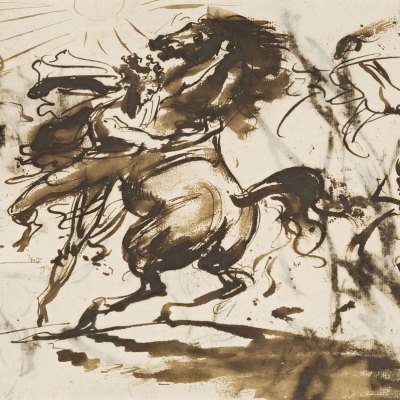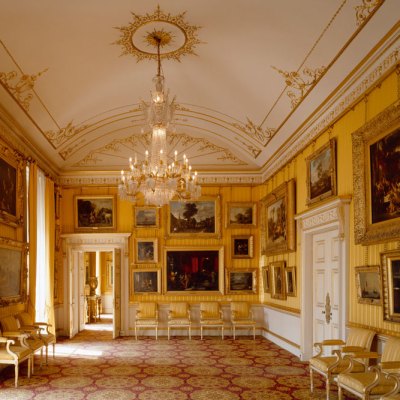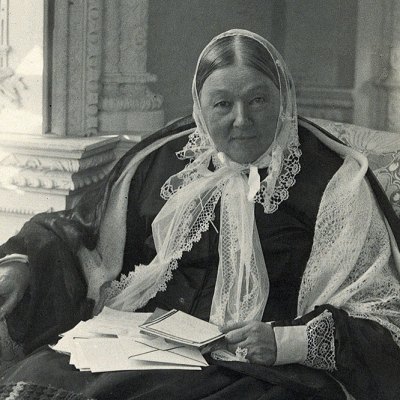The Crimean War is often described as the first modern war because of its media coverage, from the ‘first special correspondent’, W.H. Russell, to the stark and haunting photographs of Roger Fenton. Yet the new galleries that have opened at the National Army Museum in London are a reminder that images of the war were relayed by many other channels. A Welcome Arrival (1855) records the artist John Dalbiac Luard’s visit to his brother who was serving in the Crimea in the 77th (East Middlesex) Regiment of Foot. Inside the simple cabin, unpacked supplies are strewn on the floor, while the celebrity tabby cat ‘Crimean Tom’ snoozes on a table by the stove. Between the saddle and the helmet hanging on the back wall, the boards are plastered with sheets from The Illustrated London News, whose graphic artists documented every stage of the conflict. Similarly, William Simpson was greatly admired for a volume of lithographs titled The Seat of War in the East (1855–56), based on first-hand sketches that he made at sites such as Inkerman and Malakoff. With Lord Raglan’s approval, these were sent in the official dispatch bag to London, for further scrutiny by Lord Newcastle, as Secretary of War, and even Queen Victoria herself. Combining picturesque effect with documentary precision, Simpson’s watercolours restore colour and immediacy to a conflict we usually picture in black and white – and which remains troubling and timely.
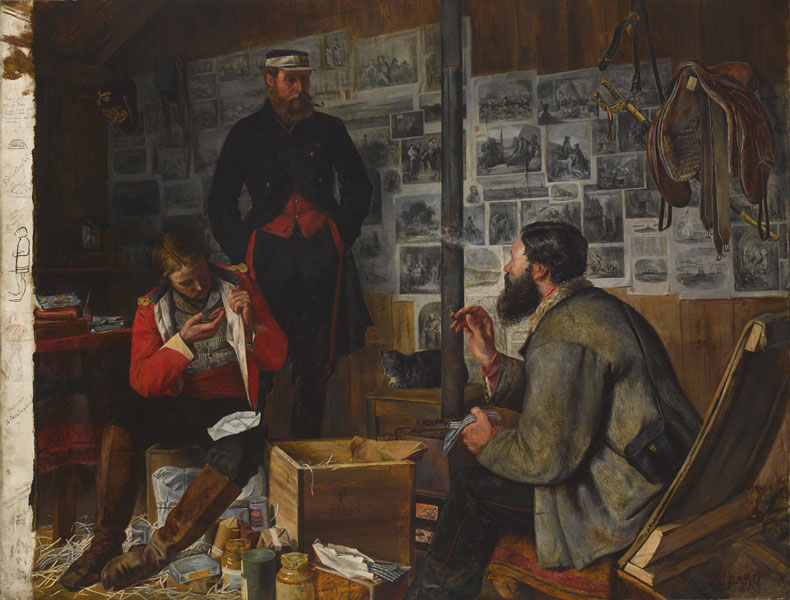
The National Army Museum is an underrated venue for exploring many varieties of Victorian art and image-making. In its new galleries of war art, an exhibition called ‘Myth and Reality’ presents some of the most recognisable images of the campaign against Russia, from Florence Nightingale tending the sick in Scutari (in Jerry Barrett’s widely reproduced composition) to Lady Elizabeth Butler’s The Roll Call (1874), on loan from the Royal Collection. Eventually acquired by Queen Victoria, who leaned on its somewhat reluctant original owner, the picture was a sensation when displayed at the Royal Academy in 1874 and even embarked on a nationwide tour. In William Holman Hunt’s verdict, ‘it touched the nation’s heart as few pictures have ever done.’ Today it seems an unlikely crowd-pleaser, a sombre frieze of exhausted and broken bodies. Produced decades after Fenton’s photographs, Butler’s painting underlined the real human costs of this protracted and inglorious war.
Leading print-sellers were quick to realise the commercial opportunity of reliable and relatable war imagery. If Colnaghi paid for Simpson to visit the Crimea, then Barrett’s trip was funded by Thomas Agnew (the London branch of whose business opened in 1860, and who also published Fenton). Agnew was also the brains behind The Capitulation of Kars, Crimean War, 28 November 1855 by Thomas Jones Barker. Rescued from the reserves for this new exhibition, the five-metre-wide canvas depicts the dignified retreat from Kars by a convoy of British troops, headed by a steely Brevet Colonel William Fenwick Williams. What was in reality a defeat, as the Anatolian city finally succumbed to a fourth Russian assault, was instead exalted as an episode of British grit and determination. It still makes for a heady spectacle, with ‘oriental’ details and sentimental poses reminiscent of Antoine-Jean Gros’s depictions of Napoleonic battlefields. Agnew commissioned the painting from Barker primarily to make prints after it – thereby bringing the work to a large public and boosting both profits and morale.

The exhibition demonstrates that Victorian war art has far more to offer than patriotism and propaganda. Some of that is on display courtesy of Louis Desanges, who depicted the heroic deeds behind each award of the Victoria Cross, a decoration invented at the close of the Crimean War in 1856. At the Egyptian Hall in Piccadilly in 1859, Desanges exhibited 32 of these anecdotal paintings, which by that point encompassed the events of the Indian Mutiny too, a subject he tackled in frenzied and dehumanising fashion. Three years later, no fewer than 53 paintings by Desanges were installed in the ‘Victoria Cross Gallery’ at the Crystal Palace in Sydenham.
In general, though, what is so interesting about the exhibition is that it resists clichés and assumptions. Representing war was not just a political matter, but also an invitation to formal experimentation. From the sketchbooks of Lady Butler to the panoramic, watercolour triptych produced by the art historian Joseph Archer Crowe, we can see the challenge of showing troops marching in formation, experimenting with aerial perspectives, capturing manoeuvres across a landscape, compressing the action in time and space and balancing individual expression with the demands of a group portrait. The results can be compellingly strange. Some of the figures arising out of the swampy earth in Butler’s Dawn of Waterloo (1895) are almost spectral, not so much waking up as emerging from their tombs, in ways that recall Édouard Detaille’s mysterious Le Rêve, exhibited in Paris seven years before.
The long afterlife of Waterloo is one theme of the exhibition and of Butler’s work in particular – think of the hurtling hooves of Scotland Forever (widely marketed as a print by Siegmund Hildesheimer). But the cult of Wellington and 1815 only threw into relief the moral complexity and ambivalence of later imperial conflicts. Butler had a keen sympathy for the plight of the common soldier and of long-suffering horses. The painting of her husband on horseback at Tel-el-Kebir in 1882 is the surviving fragment of a much larger work that was destroyed because of the couple’s opposition to Gladstone’s invasion and occupation of Egypt. Butler’s The Defence of Rorke’s Drift (1880), though somewhat awkward and disaggregated in its choreography of figures, focuses squarely on the anguish and sacrifice of the individual combatants. Her decision to omit the Zulus almost entirely provides an intriguing contrast with Charles Fripp, whose politicised treatment of the British defeat at Isandlwana can be viewed in the museum’s permanent collection.
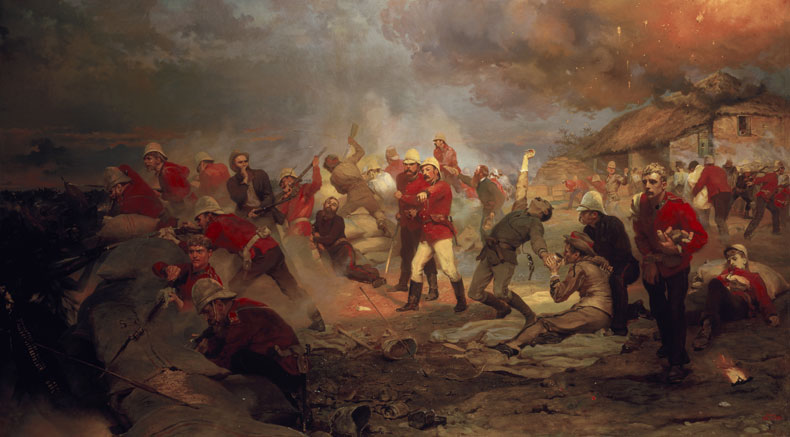
Through a selection of lesser known works, paired with souvenirs and family artefacts, this exhibition reinstate the intimate dimension of war. There are the women artists such as Emily Henrietta Ormsby, who painted meticulous portraits of their fathers and husbands in uniform; there is Vereker Hamilton’s full-length, Whistlerian portrait of his brother Ian in 1882, at that time enrolled in the Gordon Highlanders (and who in later life commanded the disastrous Gallipoli campaign); and then there is the tender portrait of Frederick Roberts, the only adult son of Field Marshal Roberts and recipient of the first posthumous Victoria Cross in 1899. It hangs just near the telegram that reported his death in the Second Boer War to the devastated father, and a photograph that documents the cherished portrait’s place above the mantlepiece in the Roberts’ family home. Such a layering of stories and objects – mixing public reputation with private feeling – put the paintings into a wider social and emotional context, more than earning the exhibition its title of ‘Myth and Reality’.
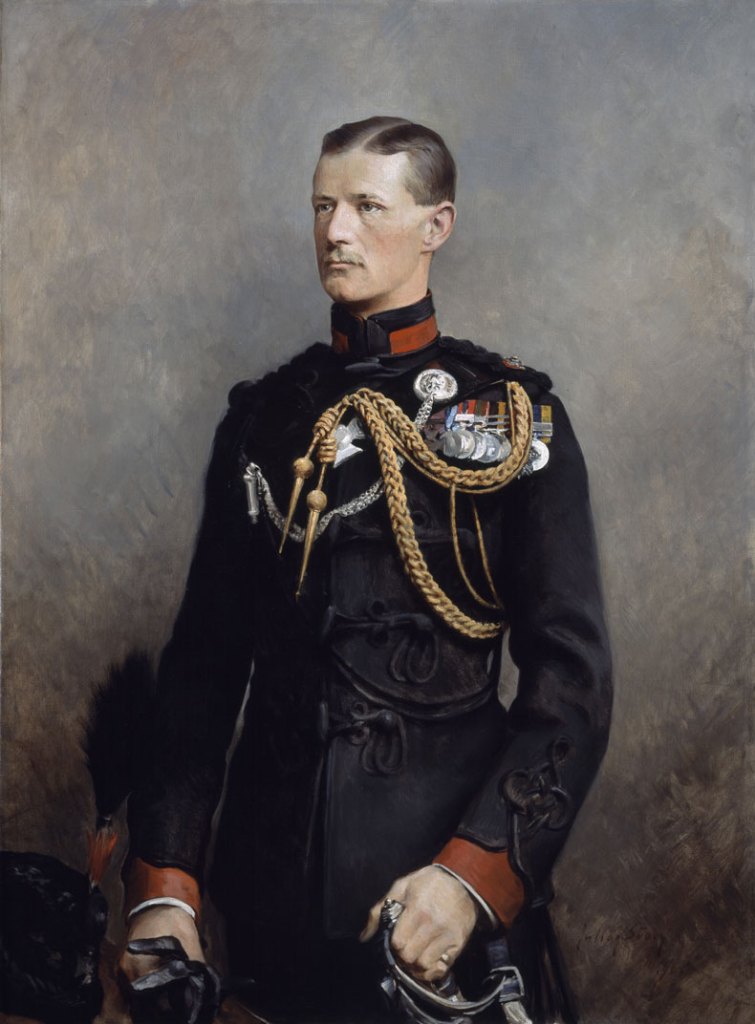
‘Myth and Reality: Military Art in the Age of Queen Victoria’ is at the National Army Museum, London, until 1 November.

